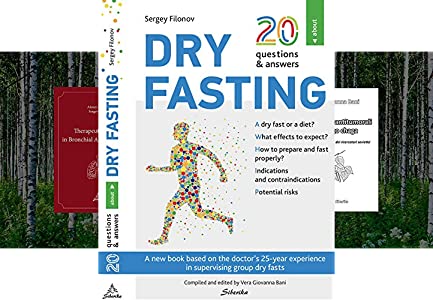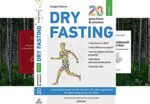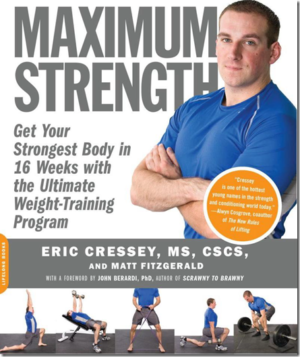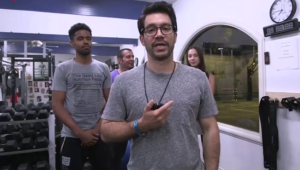(This course is available for immediate delivery!)You’ll be able to figure out whether fasting is contraindicated in your case, and when you start, you’ll know when to break the fast. File Size:6.53 MB
Dr Sergey Filonov – 20 Questions & Answers About Dry Fasting: A Complete Guide To Dry Fasting (Siberika Publishing)
Therapeutic fasting is not simply abstinence from food. There are rules of comfortable and effective fasting, just as there are rules of healthy eating. If you are aware of these rules, you won’t feel lost if you experience nausea or headaches during fasting. You’ll have no doubts as to when and where to utilize enemas for intestinal cleansing.
You’ll be able to figure out whether fasting is contraindicated in your case, and when you start, you’ll know when to break the fast. You won’t risk by eating salt and butter during the refeeding period.
Familiarity with the rules of fasting will allow you to attain positive results and avoid the side effects as much as possible. Many of the rules described in Sergey Filonov’s book were developed by Soviet doctors in the 1960s-90s.
At that time, the Ministry of Health Care of the USSR conducted extensive research, aiming to introduce fasting as a clinical treatment method. Based on the results of this work, the Ministry created manuals for doctors who were not experts in fasting. These manuals contained detailed protocols and recommendations on using this method for various clinical purposes. Dry fasting (fasting without water) was one of the discoveries made by researchers during that time period. It drew the scientists’ interest as a way to shorten the duration of classic water fasting. In order to obtain the desired effect from a one-time wet fasting course, it should last between 2.5 and 4 weeks, which, of course, is a very long time for a patient to remain in a hospital.
Research into dry fasting conducted in the early 1990s, demonstrated its high efficiency – the result of one day of dry fasting approximately equals that of 3 days of wet fasting. This discovery allowed to significantly decrease the duration of treatment. The combined method – 3 days of dry fasting followed by 10-14 days of wet fasting – has been used in clinical practice since the 1990s. An additional unusual fact has also been discovered: it turned out that, as counterintuitive as it may sound, dry fasting is much better tolerated than wet fasting. This became great news for the adherents of intermittent fasting. They could easily switch from the classic 5:2 regimen to the 6:1 dry regimen, thus obtaining an additional day for their social life without sacrificing the effect of fasting.
Doctor Filonov has been using dry fasting in his clinical practice for approximately 25 years. He based his method on the experience with 1 to 3-day dry fasts obtained by the Soviet doctors, and developed it, increasing the duration of the fasts to 11 days. His book is for those who want to attempt and follow the path of dry fasting or are already using it. It contains all the required recommendations and rules, some of which are based on the conclusions of scientific works conducted in the 1990s, and others –on the author’s own experience in his clinical work.
“20 Questions and Answers about Dry Fasting†is the only book that provides detailed instruction for conducting dry fasts of various durations. There have been, in fact, scientific publications and official recommendations on dry fasting for up to 3 days, but longer fasting terms have remained terra incognita up until recently.
Dr. Filonov’s book is of interest as a pioneering work in this field, even if it does not aspire to a status of scientific work. We hope that, in addition to fasting aficionados, the book will also elicit an interest in scientists who will conduct further research of this topic.
Get immediately download Dr Sergey Filonov – 20 Questions & Answers About Dry Fasting
Here’s What You’ll Get in Dr Sergey Filonov – 20 Questions & Answers About Dry Fasting: A Complete Guide To Dry Fasting (Siberika Publishing)








